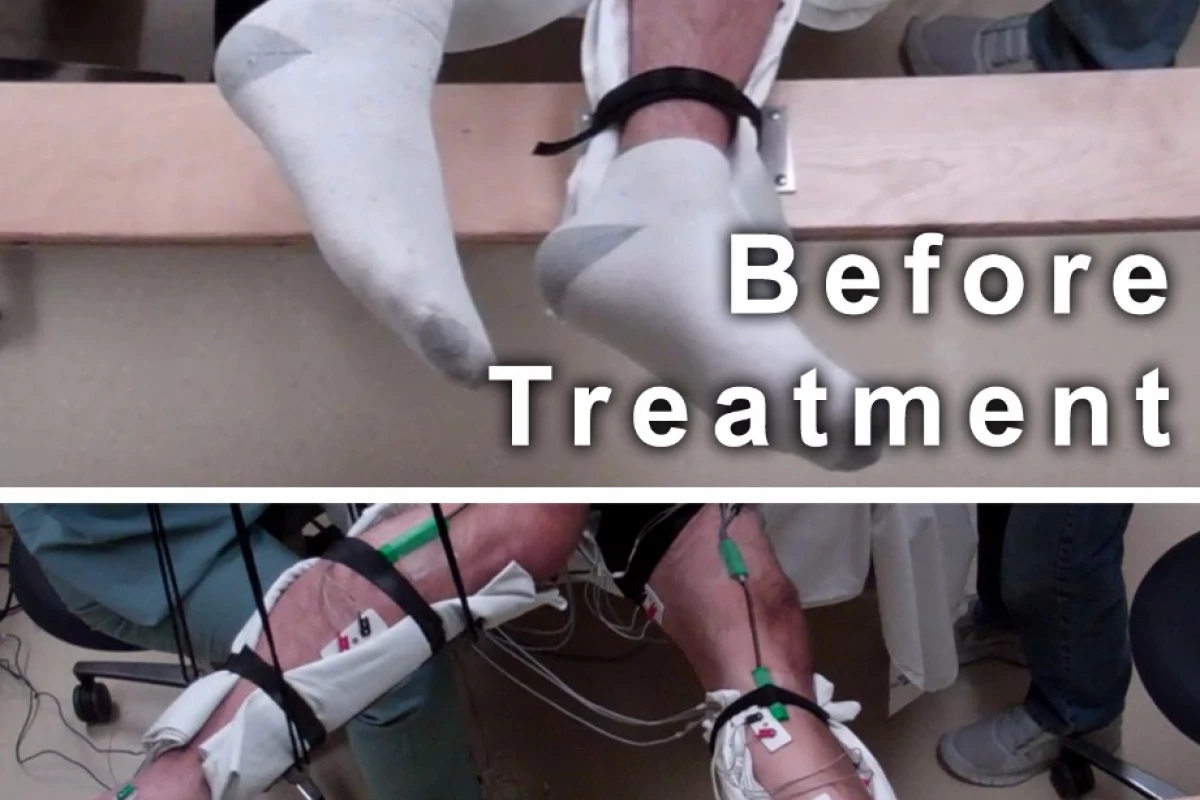Five men with complete motor paralysis have regained the ability to move their legs voluntarily and produce step-like movements after being treated with a non-invasive form of spinal cord stimulation. The new treatment builds on prior work to generate voluntary movements in paralyzed people through electrical stimulation – in particular, two studies (one completed in 2011, the other in 2014) that involved surgically implanting an electrode array on the spinal cord. This time, however, the researchers found success without performing any invasive surgery.
The new treatment uses a technique called transcutaneous electrical nerve stimulation, which involves strategically placing electrodes on the skin of the lower back. While receiving stimulation, the men's legs were supported by braces that hung from the ceiling. At first their legs only moved involuntarily, if at all. But they soon found they could voluntarily extend the distance their legs moved during stimulation. They doubled their range of voluntary motion after four treatment sessions.
In an effort to further improve voluntary motion, the researchers gave the men a drug called buspirone during the final four weeks of the 18-week study. This drug mimics the neurotransmitter serotonin, and it is known to induce walking motions in mice with spinal cord injuries.
All five men had been paralyzed for more than two years prior to receiving the treatment, which lasted 45 minutes at a time and was conducted once a week for the duration of the study. But by the end of the study, after they had received the buspirone drug, they could all move their legs with no stimulation at all. This movement was comparable to what they achieved while receiving stimulation.
"It's as if we've reawakened some networks [in the nervous system]," said co-lead researcher V. Reggie Edgerton.
There appear to be connections between the brain and spinal cord even in some paralyzed people, only they have gone dormant. But electrical signals generated in the men's leg muscles during stimulation suggest this can be reversed.
Edgerton now hopes to test the non-invasive stimulation on people with partial paralysis. He also notes that, while the results here are very promising, both invasive and non-invasive forms of electrical stimulation will need to be developed further and one will likely not prove better than the other for everyone.
"All patients are going to need something slightly different," he said, "and maybe non-invasive stimulation is going to be best in some cases and epidural stimulation in others. What we need to do is maximize the clinical tool box that we have so that the physician and the patient can select a therapy that is best for them."
The study was conducted by researchers at UCLA, the University of California, San Francisco, and Russia's Pavlov Institute. A paper describing the research was published in the Journal of Neurotrauma.
The video below shows how men's leg movement improved after treatment.
Source: National Institute of Biomedical Imaging and Bioengineering




